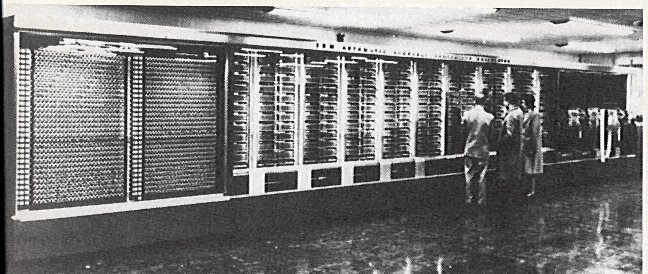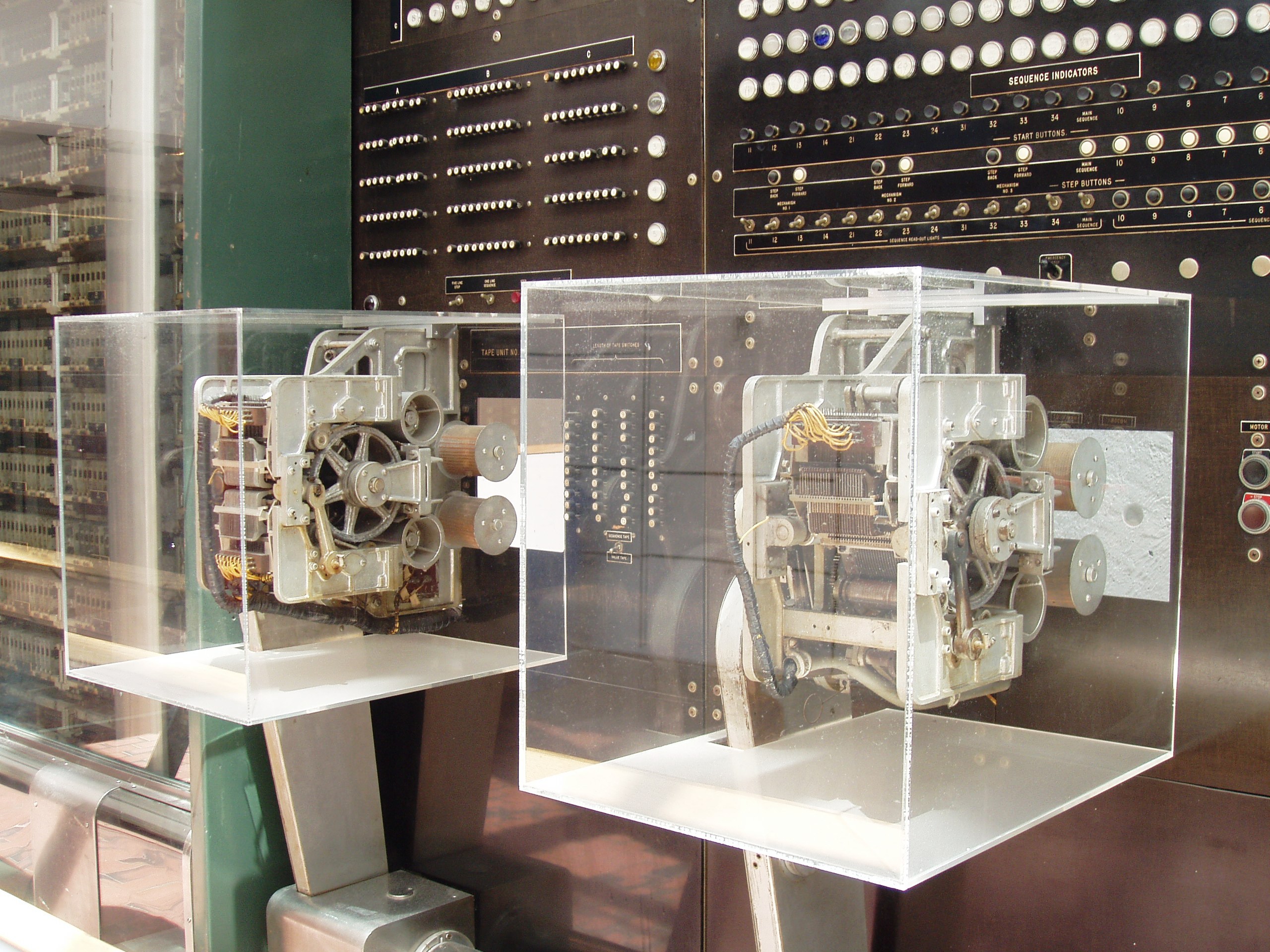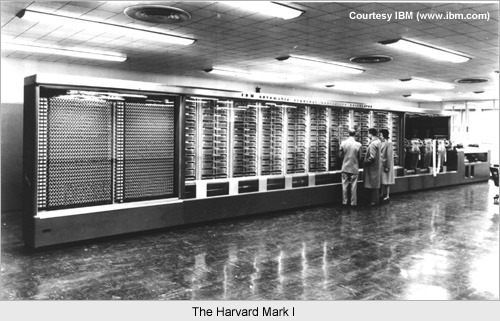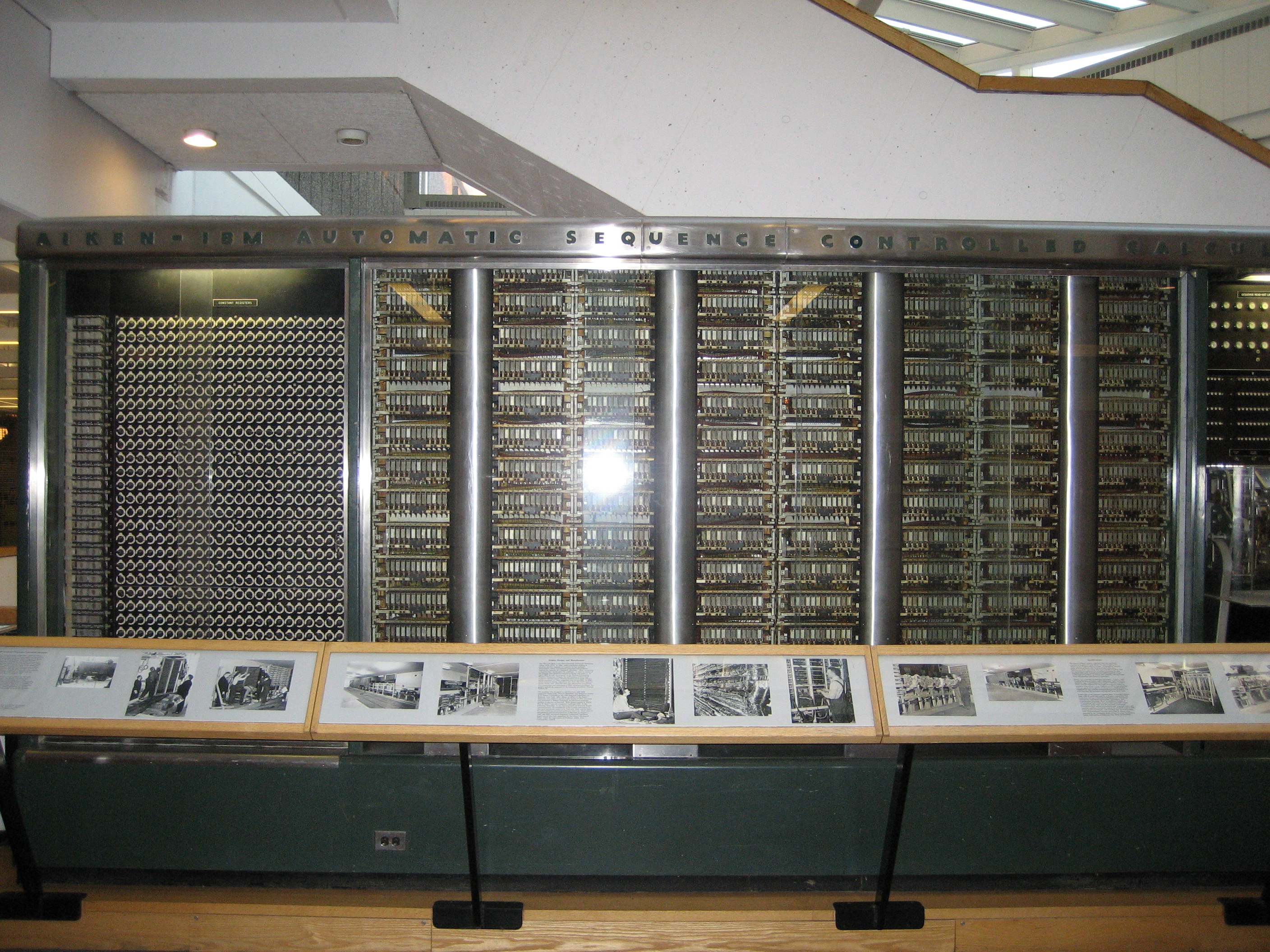Harvard Mark I
The Mark I, formerly called Automatic Sequence Controlled Calculator ( ASCC ) is a fully built in electromechanical components in the United States 1943-1944 computer. The calculator was designed by Howard H. Aiken of Harvard University in Cambridge, Massachusetts, and IBM engineers ( Clair Lake, Frank E. Hamilton, Benjamin Durfee, James W. Bryce ) designed and built by IBM. He had a weight of 5 tons and a front length of 16 meters.
The computer was used by the U.S. Navy 1944-1959, among other ballistic calculations. The first program was in 1944 John von Neumann for the Manhattan Project ( bills at Implosionskonzept the plutonium bomb) run.
1998 proved that the Mark I was turing powerful. He was after the Zuse Z3 of the second turing powerful computer.
The Mark I is now in the Cabot Science Building at Harvard University. For her contribution to the Mark I Aiken, Durfee, Hamilton and Lake in 2014 were incorporated into the National Inventors Hall of Fame.
Comparison with other early computers
Successor
IBM ( Thomas J. Watson) was incensed when Aiken as the sole inventor of the Mark I was spending (of the IBM engineers he mentioned only Bryce, his direct contact ). IBM and Aiken then went their separate ways. Aiken developed without IBM the Mark II (1947 /48), also a relay computer, III (1949) and IV (1952 ), the Mark III ( for the U.S. Navy ) have an electronic computer was using vacuum tubes and diodes, and magnetic drum memory, partly also with relays, and the Mark IV ( for the U.S. Air Force, but he remained at Harvard ) purely electronic with magnetic core memory. IBM developed the Selective Sequence Electronic 1944 Calculator.










